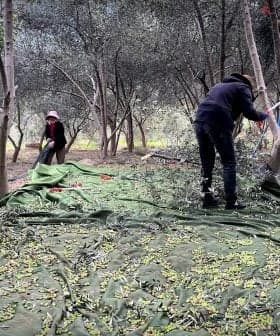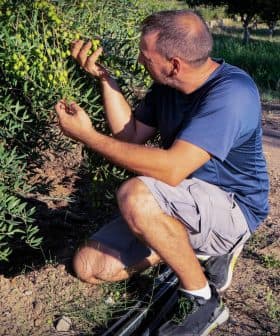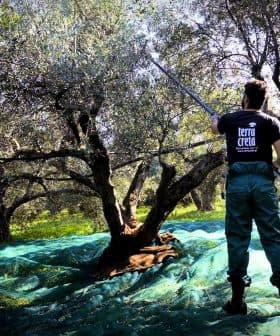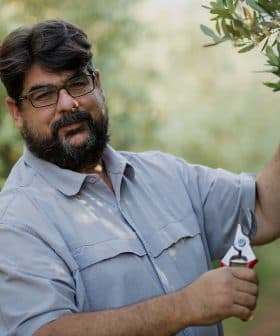Researchers Develop Early Warning System for Citrus Plant Disease
The new method detects salivary sheafs left by the infecting vectors on the plant, which then allows farmers to determine whether the trees have been infected before they begin to show symptoms of the citrus greening disease.
Researchers at the University of Florida have developed a possible early detection method for citrus greening disease, also known as HLB, which has devastated the Florida citrus industry. The method involves visualizing salivary sheaths left by the Asian citrus psyllid on citrus leaves and could help alert growers to the disease before it spreads further, although scaling it up for commercial groves may be a challenge.
Researchers have taken another step forward in combating the citrus greening disease that has plagued the industry.
A possible early detection method for the disease, which is also known as citrus huanglongbing (HLB), was announced earlier this year by Sheo Shankar Pandey, a postdoctoral research associate in plant pathology, and Nian Wang, a professor of microbiology and cell science.
It’s an improvement basically in detection, as far as confirmation. The difficulty with all of these techniques is scaling up to make it epidemiologically applicable in a large landscape.
Both researchers work at the University of Florida citrus research and education center and published a paper detailing their findings in the American Phytopathological Society.
HLB has already devastated large portions of the Florida citrus industry.
See Also:News from the United States“The Asian citrus psyllid feeds on citrus leaves and stems, and can infect citrus trees with a bacteria that causes a serious plant disease called Huanglongbing, also known as HLB or citrus greening disease,” the Citrus Pest and Disease Prevention Program wrote on its website. “While not harmful to humans, the disease kills citrus trees and has no cure.”
It can take months, even years, for signs of infection to become known. By then, the insects may have spread the disease to many more trees. The symptoms are obvious, but once they have manifested it is too late to save nearby trees.
“HLB-diagnosed plants exhibit blotchy mottle leaves, stunted growth, yellow shoot, reduced fruit size, corky vein, root decline, and ultimately, dieback,” Pandey and Wang wrote.
As trees can be infected for months or years before a grower may notice symptoms, an early detection method could help alert them to the problem before it can spread further.
“We take advantage of the fact that Ca. L. asiaticus [the vector that spreads the disease] remains around the ACP feeding site immediately after transmission,” Pandey and Wang wrote in the study. “ACPs secrete salivary sheaths at their feeding sites, which can be visualized using Coomassie brilliant blue staining. Epifluorescence and confocal microscopy indicate the presence of salivary sheaths between the blue spots on ACP-fed leaves.”
HLB was first reported in 2005 in Florida and over the course of nearly 15 years has caused more than $10 billion in damage to the state’s citrus industry.
“Nearly every planting in Florida from about Gainesville south is infected,” Tim Gottwald, a plant epidemiologist at the U.S. Department of Agriculture’s horticultural research laboratory in Florida, told Olive Oil Times.
“The only time that changes is if it’s a new planting, but even new plantings, by the time they’re 18 to 24 months, they’re normally 50 to 100 percent infected,” he added. “The vector is everywhere, the disease is everywhere, and the industry is in decline. We’ve gone from 243 million boxes per year to somewhere in the 40 million boxes, probably.”
The disease also has been found in South Africa, Indonesia, and the Philippines, threatening the citrus industry of each country. California, another large producer of oranges in the United States, has a free hotline for those who believe they have seen the Asian citrus psyllid or signs of tree infection.
“Globalization and people moving citrus plants from one place to another have spread this devastating disease,” the Citrus Pest and Disease Prevention Program wrote.
This new possible early detection method will likely help small growers, but be less useful for commercial groves, according to Gottwald.
“It’s an interesting methodology,” he said. “It’s an improvement basically in detection, as far as confirmation. The difficulty with all of these techniques is scaling up to make it epidemiologically applicable in a large landscape.”
Gottwald added that the method would likely work best for those who can sample more leaves in a small amount of trees.
“It’s not to put down the method at all,” Gottwald said. “It’s a nice little advancement to PCR (polymerase chain reaction)… which is a very accurate, very reliable methodology. But when you try to take it out into an orchard, the problem you have with PCR and other methods like this is the disease is not completely distributed in a single tree, not even in a single leaf.”
“With a tree with 100,000 or 200,000 leaves on it, you have to pick samples,” he added. “It works very well in a nursery situation where you’re very interested in a certain tree.”
In spite of this new advancement in detection, Gottwald believes that the citrus industry still has a long way to go in dealing with HLB.
“There’s no short-term solution that I’m aware of,” Gottwald said.
- The American Phytopathological Society
- Citrus Pest and Disease Prevention Program









